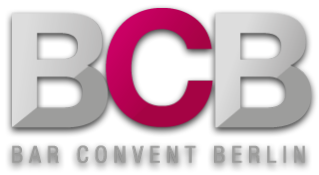How Things Stand in Beer Stronghold Germany
A look back at the last year and a half is enough to make one shudder, particularly when it comes to the brewing industry. And 2020 had started off so promisingly with the prospect of a magnificent beer-garden summer full of beer and folk festivals, not to mention the UEFA Euro 2020 Football Championship and all the beer that is traditionally consumed while watching it, either at home on TV or in crowded public viewing areas. Yet all of this came to exactly nothing.
In Germany in particular – the country where draught beer and a perfect foamy head enjoy legendary status – the industry was forced to improvise and make do with makeshift solutions as they looked for new packaging and new marketing strategies. Brewery employees who had previously maintained close relationships with their partners in the hospitality trade were forced to switch to maintaining contact with bricks-and-mortar retailers and online outlets. Huge volumes of draught beer – much of which had been produced in advance for the summer and for UEFA Euro 2020 – actually had to be dumped.
Breweries’ existence is at stake
In early 2021, the German Brewers Federation (DBB) conducted a survey of German brewers, and the numbers they uncovered where scary: one in four brewers is currently in danger of going under. The coronavirus crisis has hit the entire industry hard – companies of all sizes are recording huge drops in sales and being forced to turn to short-time work and job cuts.
According to the DBB’s most recent survey of business performance, brewers’ sales from January through March 2021 were down by 33 percent on average. The federation’s survey revealed that brewers who sell most of their beer through restaurants and bars have been hit particularly hard. As a result of the complete collapse of the draught beer market, companies are complaining of drops in sales of as much as 85 percent.
A retail lifeline?
Very few brewers – those for whom the retail sector accounted for most or all of their sales – managed to avoid these drastic falls in their sales. In general, however, the poor margins earned on the relatively steady business of selling bottled beer cannot come anywhere close to making up for the heavy losses suffered in supplying the hospitality trade. “The German brewing industry has not suffered falling sales of this magnitude since the end of the Second World War,” according to Holger Eichele, Managing Director of the German Brewers Federation (DBB).
The sales lost due to the lockdown and its closure of bars and restaurants have impacted every aspect of the business of Germany's more than 1,500 breweries. More than 85 percent of the companies surveyed had been forced to put staff on short-time work, particularly their field staff. Four out of five brewers have had to postpone or cancel investments that were needed now or which are important to their future.
Cans make a comeback
The beer industry has faced up to the challenges posed by the crisis in many different ways. Smaller breweries in particular have demonstrated some level of flexibility in switching to cans. Cans have become much more environmentally friendly in recent years, and recycling rates are excellent. And there are additional benefits: cans protect beer against light, can be chilled quickly, and are light and compact for transport, making them extremely practical – and they offer excellent design potential. Cans frequently appear to be miniature works of art.
Growth against the trend
The non-alcoholic segment of the beer market has actually managed to buck the overall trend by generating growth. Whereas the industry reported producing approx. 430 million litres of non-alcoholic beer in 2010, in 2020 Germany's brewers managed to sell over 600 million litres of non-alcoholic beer and malt beer – despite the coronavirus crisis and a four-month shutdown of bars and restaurants. According to the DBB, this amounts to a 53-percent-increase in market share within the past decade.
Wide variety of non-alcoholic beer
In fact, brewers of all sizes have invested large sums in researching and developing non-alcoholic beers in recent years. New filtration technologies and newly rediscovered yeasts for transforming malt sugars have resulted in a bigger variety of flavours and types of beer. ‘überNormalNull’ (literally ‘above normal zero’), created by the Kreativbrauerei Kehrwieder brewery, set a new standard for non-alcoholic IPAs, and their non-alcoholic Road Runner stout recently made quite a splash on the market. The Inselbrauerei Rügen brewery has also generated a great deal of excitement with their wide range of non-alcoholic beers that extends from seasonal specials to its Extra Special Bitter. Other brands are introducing new varieties on an almost daily basis.
A non-alcoholic beer cannot have an alcohol content of more than 0.5% by volume. The category of beers with absolutely no alcohol whatsoever is of special importance, and this is another area where research has borne fruit – Heineken 0.0 being a good example of this.
Support for the hospitality trade
Brands such as Heineken have been supporting their customers in bars and restaurants with promotional campaigns and with funding. This includes their charming ‘We’ll meet again’ campaign in which the anti-social impact of the pandemic is contrasted with pictures and videos offering a glimpse of hope, such as scenes in which people wearing stylish clothes take out their rubbish, or start dancing while they are alone and walking their dog. The campaign underscores the necessity of ingenuity and creativity in times like these. Not to mention the chance to enjoy a beer again. Regardless of whether it is on tap or from a can – as long as it is with other people.
Heineken video: https://www.youtube.com/watch?v=VO1FtdFH1q0
